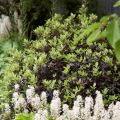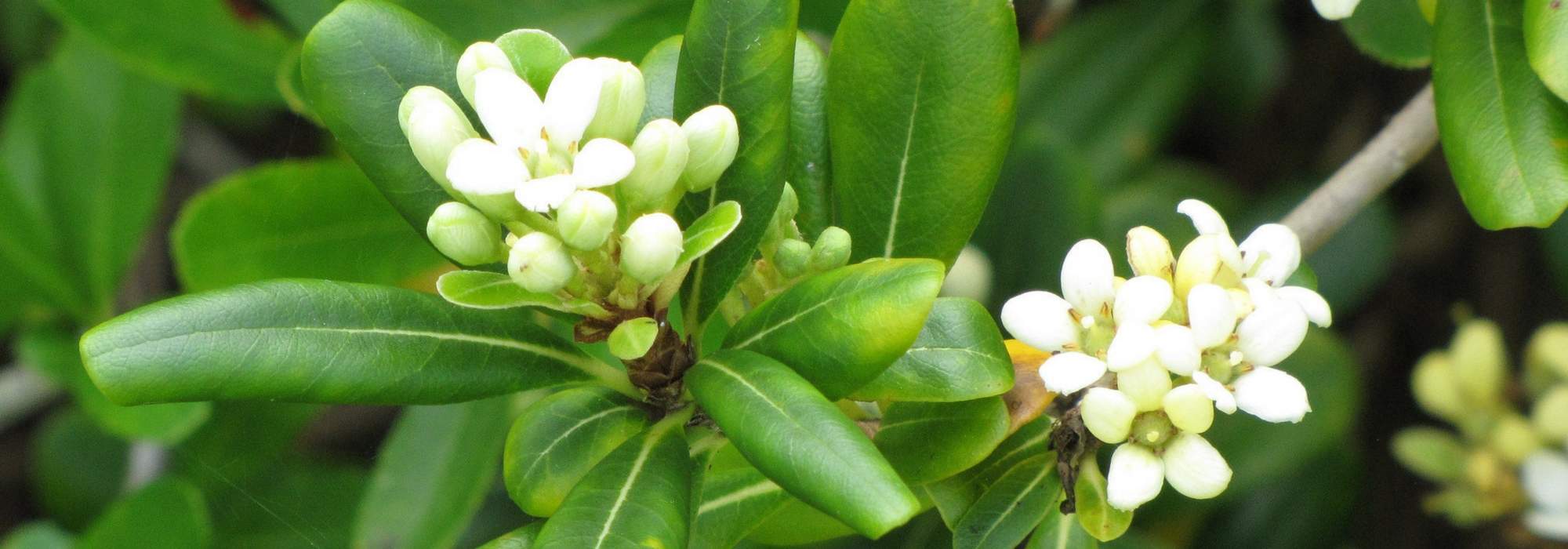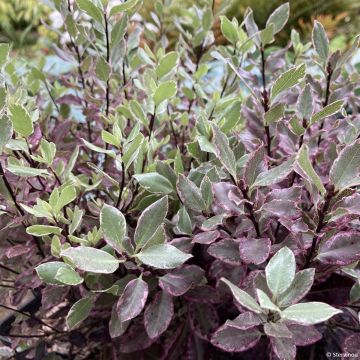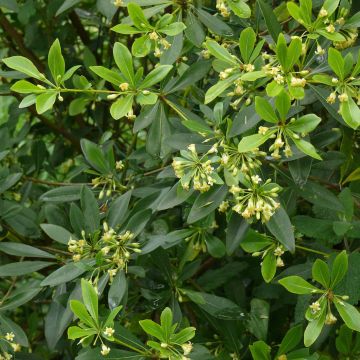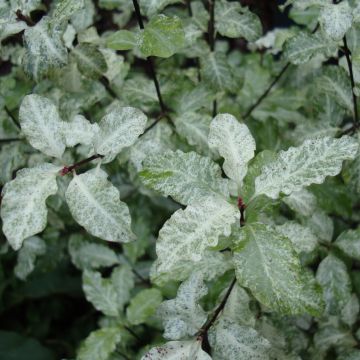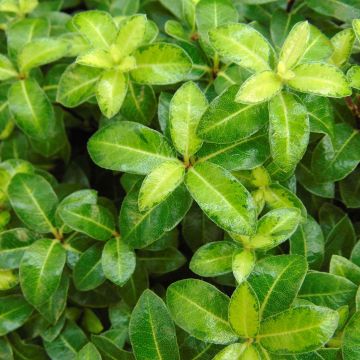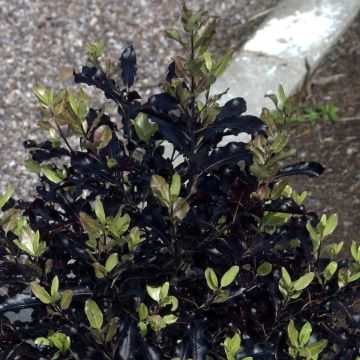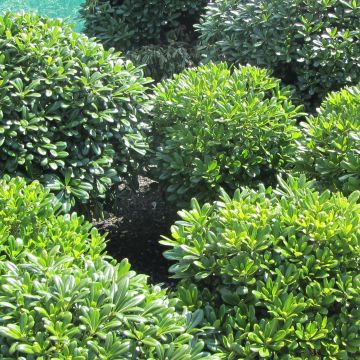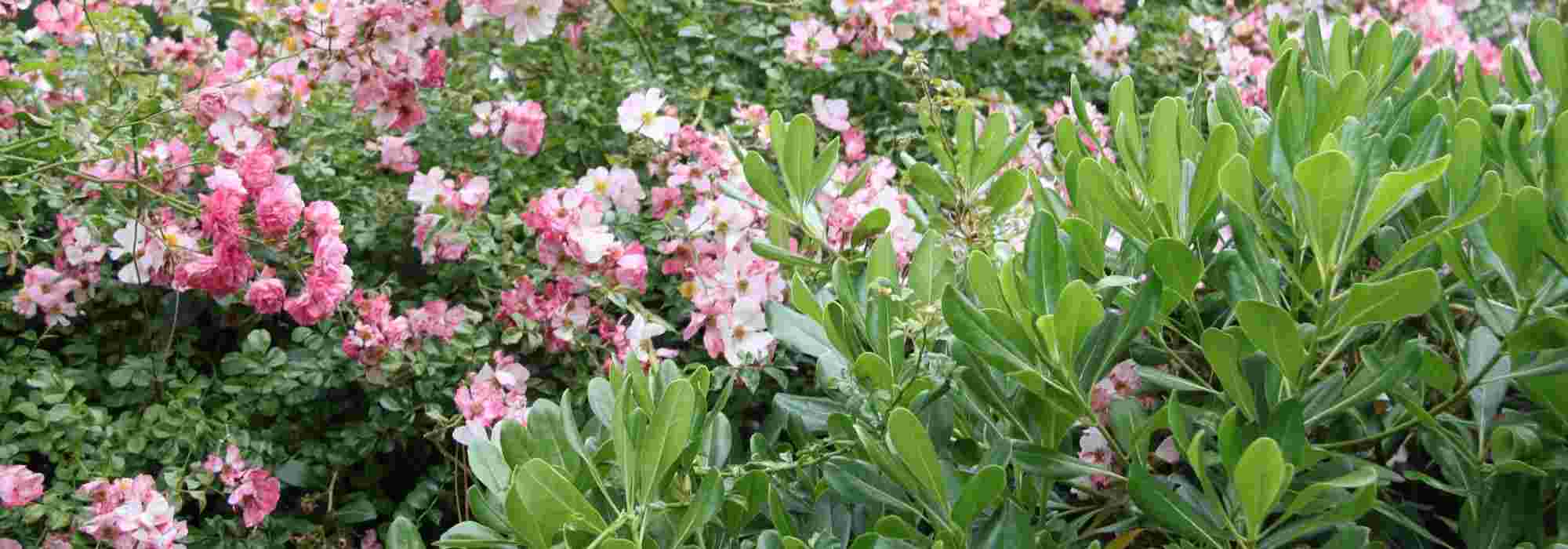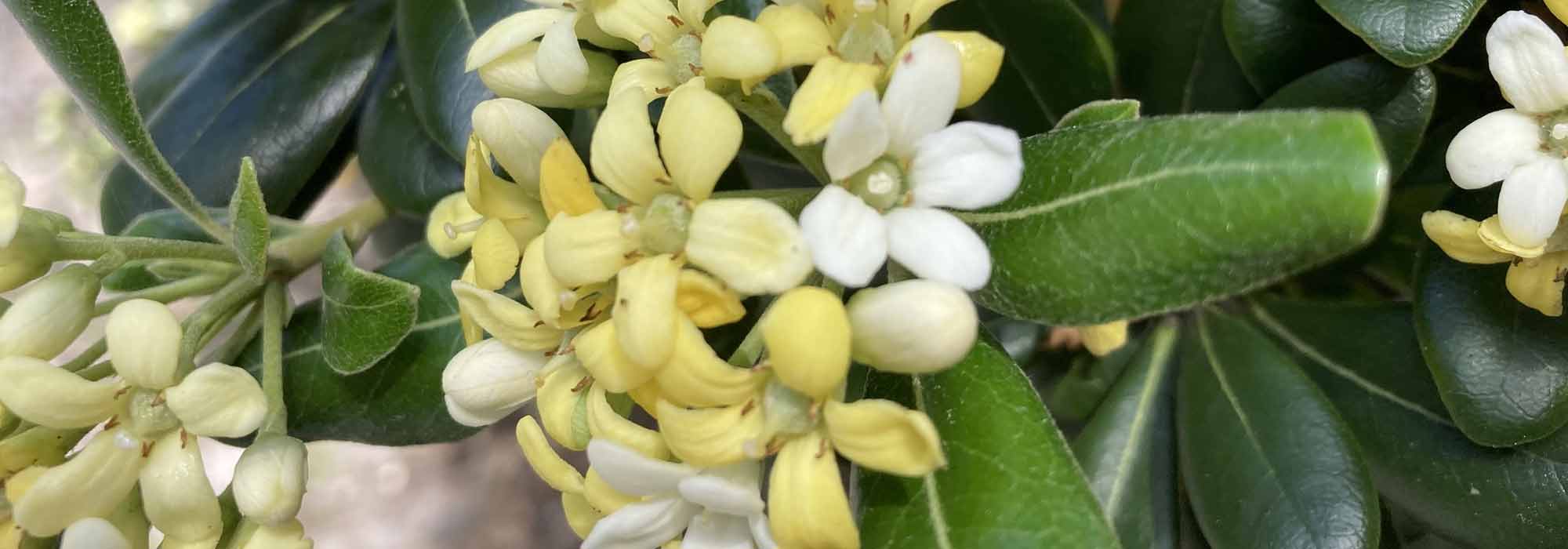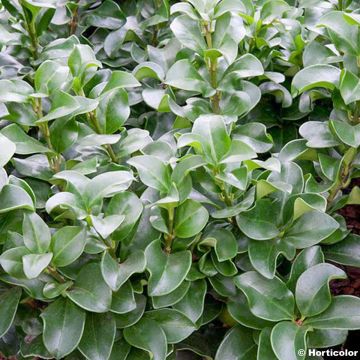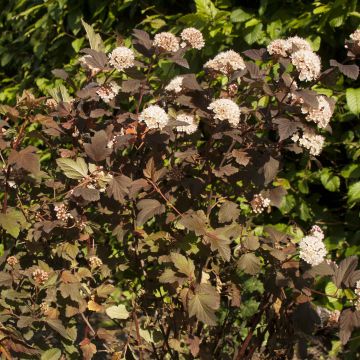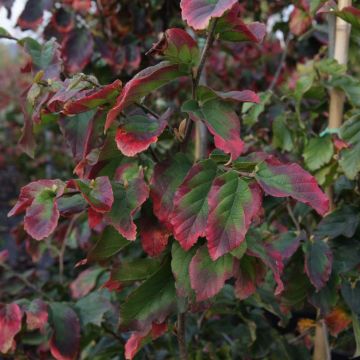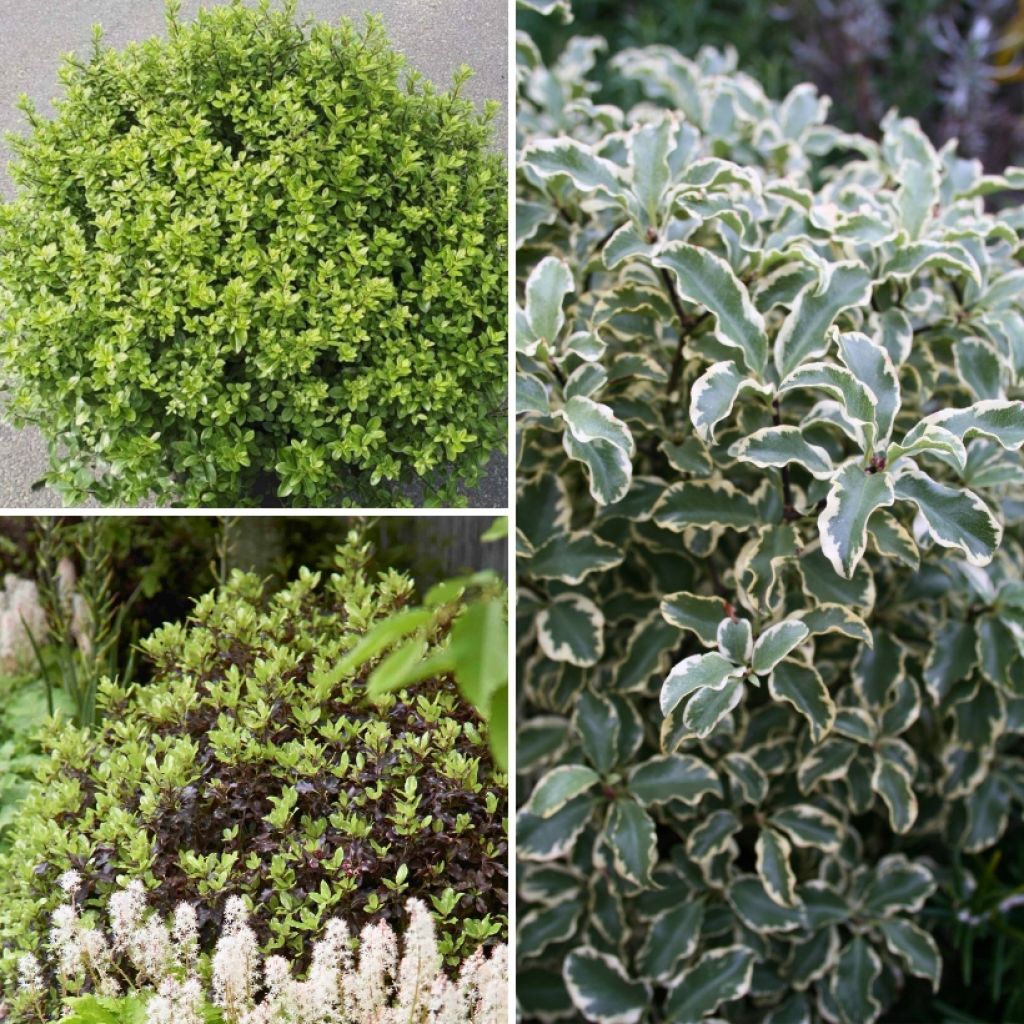

Pittosporums collection
Pittosporums collection
Pittosporum tenuifolium Tom Thumb, Variegatum, Midget
Special offer!
Receive a €20 voucher for any order over €90 (excluding delivery costs, credit notes, and plastic-free options)!
1- Add your favorite plants to your cart.
2- Once you have reached €90, confirm your order (you can even choose the delivery date!).
3- As soon as your order is shipped, you will receive an email containing your voucher code, valid for 3 months (90 days).
Your voucher is unique and can only be used once, for any order with a minimum value of €20, excluding delivery costs.
Can be combined with other current offers, non-divisible and non-refundable.
Home or relay delivery (depending on size and destination)
Schedule delivery date,
and select date in basket
This plant carries a 24 months recovery warranty
More information
We guarantee the quality of our plants for a full growing cycle, and will replace at our expense any plant that fails to recover under normal climatic and planting conditions.
Would this plant suit my garden?
Set up your Plantfit profile →
Collection items (3 plants)
Description
This is a collection of Pittosporum tenuifolium, three different varieties with elegant and diversely coloured foliage. These evergreen bushes also produce small dark red flowers in spring that emit a pleasant nocturnal fragrance of honey and vanilla. These pittosporums can tolerate temperatures down to -10°C in well-drained soil. They thrive in full sun or partial shade and are drought-resistant once established. They are excellent shrubs for coastal gardens. In colder regions, they make excellent patio plants to overwinter frost-free.
The collection consists of:
1 Pittosporum tenuifolium 'Tom Thumb': This compact cultivar reaches about 60 cm in height. Its dark purple foliage is highly decorative and forms a dense, rounded bush. Perfect for borders and small gardens, stunning in pots.
1 Pittosporum tenuifolium 'Variegatum': This variety stands out with its bright variegated foliage, light green with cream-white margins. Capable of reaching 2.5 m in height and 1.50 m in width, this shrub will bring brightness to a border or hedge.
1 Pittosporum tenuifolium 'Midget': Small and compact, with a columnar shape, 'Midget' does not exceed 80 cm in all directions. Its small leaves are light green and glossy. It tolerates pruning well and is an excellent alternative to boxwood edging in mild climates.
Plant these Pittosporum tenuifolium preferably in spring, in well-drained and slightly acidic soil. In a border, place the tallest plants, such as 'Variegatum', at the back, and the smaller ones, such as 'Midget' and 'Tom Thumb', at the front. Planting in the ground is reserved for regions with mild winters. Pittosporum tenuifolium also adapts perfectly to container gardening. Use a container of at least 30 litres with drainage holes, filled with Mediterranean plant compost. Water regularly, but not excessively. Add balanced fertiliser once a month during the growing season to promote their development.
Pair the smaller Pittosporum varieties with lavenders and Santolina chamaecyparissus, as these plants complement each other well. Helichrysum italicum, with its aromatic silver-grey foliage, is also an excellent companion for compact pittosporums. Also consider Erysimum 'Bowles Mauve', with its violet flowers and long flowering period.
In a coastal hedge, combine Pittosporum tenuifolium 'Variegatum' with other shrubs that are resistant to coastal conditions such as olearias, escallonias, and Myrtus communis 'Tarentina'. Plant 1 shrub every 1 m.
Plant habit
Flowering
Foliage
Botanical data
Pittosporum
tenuifolium
Tom Thumb, Variegatum, Midget
Pittosporaceae
Cultivar or hybrid
Other Pittosporum
View all →Planting and care
Pittosporum tenuifolium is most beautiful in full sun, but it can tolerate partial shade. Enrich your planting substrate with organic matter and sand to ensure it is both rich and well-drained. These bushes tolerate coastal areas well, including sea spray. Plant them between April and June. Water regularly during the first year to promote root growth, and then only during dry periods. Mulching at the base will help retain moisture and protect the roots from the cold. Pruning should be done at the end of winter, but it is only necessary to remove dead or diseased wood or to shape a hedge.
For container cultivation, use a container of at least 30 litres with rich and well-drained potting soil. Place the pots in a sunny or partially shaded location. Water regularly, being careful not to let water stagnate in the pot. Add balanced fertiliser once a month during the growing season.
Planting period
Intended location
Care
Planting & care advice
This item has not been reviewed yet - be the first to leave a review about it.
Similar products
Haven't found what you were looking for?
Hardiness is the lowest winter temperature a plant can endure without suffering serious damage or even dying. However, hardiness is affected by location (a sheltered area, such as a patio), protection (winter cover) and soil type (hardiness is improved by well-drained soil).

Photo Sharing Terms & Conditions
In order to encourage gardeners to interact and share their experiences, Promesse de fleurs offers various media enabling content to be uploaded onto its Site - in particular via the ‘Photo sharing’ module.
The User agrees to refrain from:
- Posting any content that is illegal, prejudicial, insulting, racist, inciteful to hatred, revisionist, contrary to public decency, that infringes on privacy or on the privacy rights of third parties, in particular the publicity rights of persons and goods, intellectual property rights, or the right to privacy.
- Submitting content on behalf of a third party;
- Impersonate the identity of a third party and/or publish any personal information about a third party;
In general, the User undertakes to refrain from any unethical behaviour.
All Content (in particular text, comments, files, images, photos, videos, creative works, etc.), which may be subject to property or intellectual property rights, image or other private rights, shall remain the property of the User, subject to the limited rights granted by the terms of the licence granted by Promesse de fleurs as stated below. Users are at liberty to publish or not to publish such Content on the Site, notably via the ‘Photo Sharing’ facility, and accept that this Content shall be made public and freely accessible, notably on the Internet.
Users further acknowledge, undertake to have ,and guarantee that they hold all necessary rights and permissions to publish such material on the Site, in particular with regard to the legislation in force pertaining to any privacy, property, intellectual property, image, or contractual rights, or rights of any other nature. By publishing such Content on the Site, Users acknowledge accepting full liability as publishers of the Content within the meaning of the law, and grant Promesse de fleurs, free of charge, an inclusive, worldwide licence for the said Content for the entire duration of its publication, including all reproduction, representation, up/downloading, displaying, performing, transmission, and storage rights.
Users also grant permission for their name to be linked to the Content and accept that this link may not always be made available.
By engaging in posting material, Users consent to their Content becoming automatically accessible on the Internet, in particular on other sites and/or blogs and/or web pages of the Promesse de fleurs site, including in particular social pages and the Promesse de fleurs catalogue.
Users may secure the removal of entrusted content free of charge by issuing a simple request via our contact form.
The flowering period indicated on our website applies to countries and regions located in USDA zone 8 (France, the United Kingdom, Ireland, the Netherlands, etc.)
It will vary according to where you live:
- In zones 9 to 10 (Italy, Spain, Greece, etc.), flowering will occur about 2 to 4 weeks earlier.
- In zones 6 to 7 (Germany, Poland, Slovenia, and lower mountainous regions), flowering will be delayed by 2 to 3 weeks.
- In zone 5 (Central Europe, Scandinavia), blooming will be delayed by 3 to 5 weeks.
In temperate climates, pruning of spring-flowering shrubs (forsythia, spireas, etc.) should be done just after flowering.
Pruning of summer-flowering shrubs (Indian Lilac, Perovskia, etc.) can be done in winter or spring.
In cold regions as well as with frost-sensitive plants, avoid pruning too early when severe frosts may still occur.
The planting period indicated on our website applies to countries and regions located in USDA zone 8 (France, United Kingdom, Ireland, Netherlands).
It will vary according to where you live:
- In Mediterranean zones (Marseille, Madrid, Milan, etc.), autumn and winter are the best planting periods.
- In continental zones (Strasbourg, Munich, Vienna, etc.), delay planting by 2 to 3 weeks in spring and bring it forward by 2 to 4 weeks in autumn.
- In mountainous regions (the Alps, Pyrenees, Carpathians, etc.), it is best to plant in late spring (May-June) or late summer (August-September).
The harvesting period indicated on our website applies to countries and regions in USDA zone 8 (France, England, Ireland, the Netherlands).
In colder areas (Scandinavia, Poland, Austria...) fruit and vegetable harvests are likely to be delayed by 3-4 weeks.
In warmer areas (Italy, Spain, Greece, etc.), harvesting will probably take place earlier, depending on weather conditions.
The sowing periods indicated on our website apply to countries and regions within USDA Zone 8 (France, UK, Ireland, Netherlands).
In colder areas (Scandinavia, Poland, Austria...), delay any outdoor sowing by 3-4 weeks, or sow under glass.
In warmer climes (Italy, Spain, Greece, etc.), bring outdoor sowing forward by a few weeks.






























